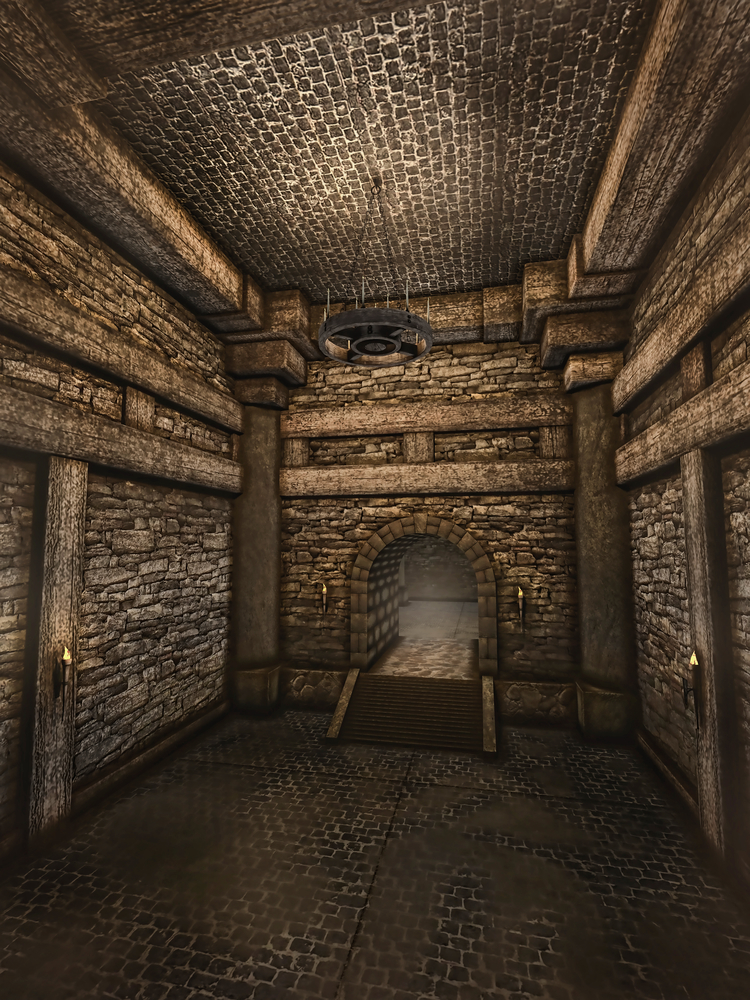Dungeon Design. The Dungeon Masters Guide gives you some idea of how to do this. But ultimately you the DM must really make the decisions about the design of your adventures and the locations that they take place in. The DMG from both 5E and from 1st Edition provide lots of tables with some wonderful ideas on how to set up different kinds of lairs, castles, caverns and other underground locations where adventures might take place. The books even give you examples of maps and encounter areas. The first edition DMG even gives you a sample dungeon with five or six detailed encounter areas. But utlimate the Dungeon Master is left on his own to design a fun an entertaining place for his or her adventurers to explore.
But there are some good resources out there to help the Game Master in dungeon design. One of these products I have used in the past is an excellent set of random tables to let the Dungeon Master creatively come up with very different types of adventures. It was written for 1st Edition but it is not really system specific as the tables merely give broad suggestions on the plot and theme of the adventure. The specifics are still left to the Dungeon Master to fill in.
Dungeon Master Design Kit
The Dungeon Master Design kit was written in 1988. It is filled with random tables for the Dungeon Master to randomly determine a possible plot for the next adventure. These give the Dungeon Master help in brainstorming their next adventure to make it totally unique. It also gives you aid in creating the perfect villain. It ninety six pages of absolute awesome.

NPCs
Npcs are easy enough to develop on your own but sometimes you may want NPCs that are more than just generic bad guys. Another early TSR product provided just such a reference. A fine product called the Rogue’s Gallery provided statistics for legendary heroes from Mythology, from Dungeons and Dragons lore and from other sources such as Lankmar. Later editions have also made a version of this fine book. But I have not yet found one for 5E.
Castles and Catacombs
Some extremely valuable and well written guides were made for 2nd Edition Advanced Dungeons and Dragons but are also quite usable for other editions. They are not system specific guides. Instead they give the Dungeon Master a great deal of help in Dungeon Design.
The Castle Guide gives you detailed knowledge about castles in the middle ages. It goes into the building of such castles. The castle guide talks a little about the types of fortifications that certain types of humanoids would likely employ. There are sample designs of castles. Specifics about certain types of fortifications that were commonly used to protect castles.

Another fine product is also shown in this picture above. The catacomb guide gives detailed information on the creation of caverns and underground labyrinths. It gives sample maps for different types of places that adventurers might want to explore. Again this is not really a system specific guide even though it was written during the development of 2nd Edition AD&D.
Villains
Villains are the bread and butter of a good adventure or campaign. Development of villains, however, is hardly touched upon in the core books for either 1st Edition or 5th Edition Dungeons and Dragons. Sure it is mentioned somewhere in the text. But it is really not developed. Story telling skills are kind of assumed by the core books of either edition. But story telling skills are not really universal. Some of us need a little help in that department. Fortunately there is a fine guide for that. And it is shown in that picture above as well.
What Makes Monsters Do What They do?
What makes an orc choose to live in dark places? What makes a goblin the vile and filthy creature that it is? These things are explored in the last book in that picture above. Monster Mythology goes into the lore of several important humanoid races. Their gods. Their histories. And what makes them what they are. These are detailed in this fine supplement. Again it is not really system specific. These topics are covered with broad enough strokes to help Dungeon Masters playing any edition of this game.
Conclusion
Ultimately the game belongs to you…..the Dungeon Master. Whether you are using modules or writing your own adventures the players will see it as your game. In order to make it the best game possible you have lots of possible resources to help you. Obviously I prefer to do my own dungeon design rather than rely on pre-written modules. But that is not for everyone. But when you do need help in Dungeon Design you might consider looking at some of these guides for help.


